Our content is reader supported, which means when you buy from links you click on, we may earn a commission.
How Elizabeth Harrin Earned 5-Figures from Her First Launch of Her ‘Managing Multiple Projects’ Online Course
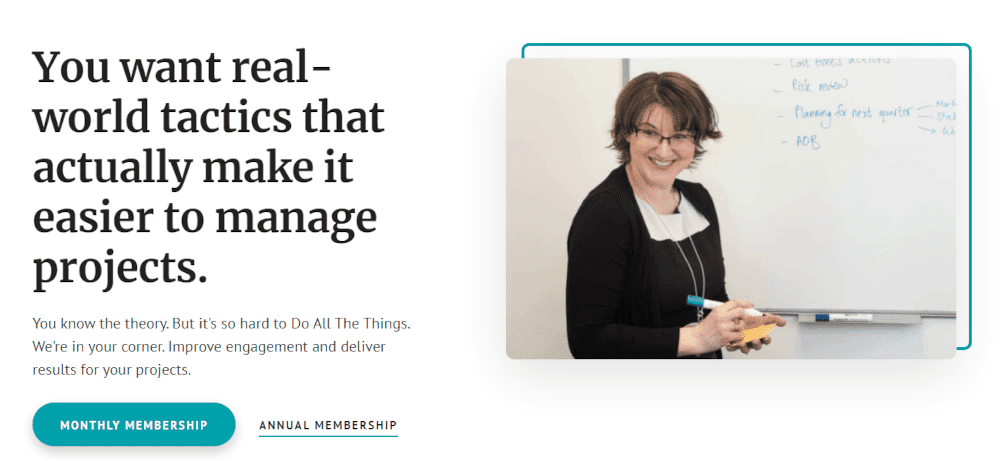
- Who: Elizabeth Harrin
- Website: projectmanagementrebels.com
- Course Topic: Project Management
- Interesting Stats: 16K subscribers on email list
Who are you and what course have you created?
I have a membership community that started life as a 6-month course.
My flagship course is Managing Multiple Projects. In addition, I have short project management courses:
- Project Scheduling explains how to estimate work and put together a timeline for your project.
- The Productivity Blueprint is a short course aimed at helping project managers with time management and creating efficient working habits.
I also teach courses in stakeholder engagement, change management, and an introduction to project management.
What market does your online course serve?
I work with early and mid-career project professionals, and people who have to manage projects as part of their day job. Sometimes they have the title of project manager, but many people are in other types of jobs. These days, so many roles include an element of having to lead projects. Often with no specific training in how to do that.
That’s the gap I fill: practical, hands-on, classes that come with all the templates and resources you need to implement your new knowledge back at work. - Elizabeth Harrin Click To Tweet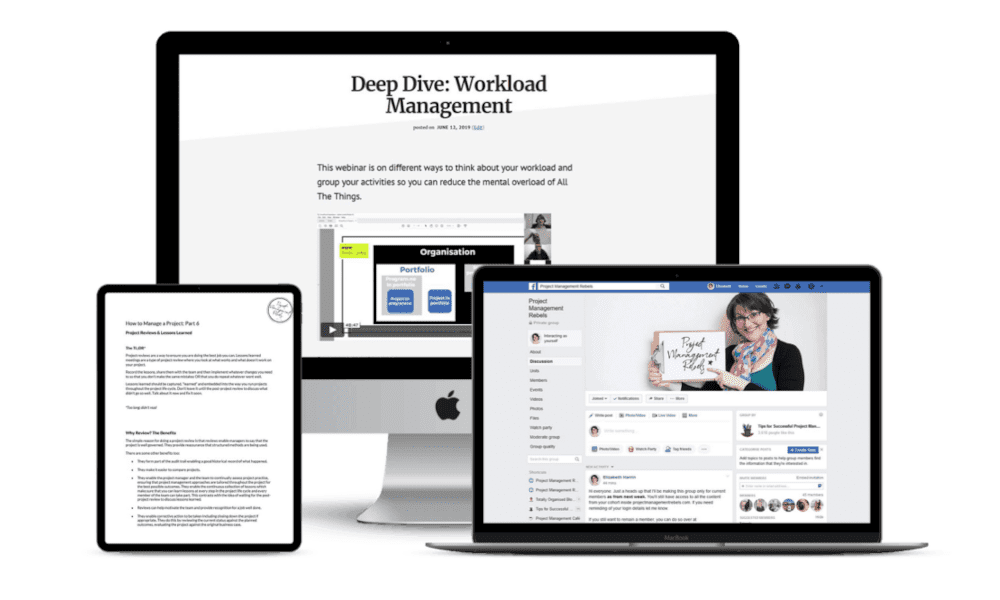
What’s the biggest benefit of taking your course?
I think the biggest benefit of taking my Managing Multiple Projects course is that students come away from it feeling like they can manage their workload more effectively. There’s a stress-relieving effect to learning the tools and techniques to juggle All The Things. So often, we end up in roles where it’s the norm to have upwards of 10 things on the go at once. Plus all the stuff we’re expected to do at home and in volunteer positions.
So I’d say the biggest benefit is the sense of feeling that by implementing a few strategies and thinking about your workload differently, you can really shift how you feel about all the projects on your To-Do list and ditch the overwhelm for good.
How did you get into the market?
I’m a project manager by trade and I spent 20 years doing the job. I’ve done loads of courses and read loads of books (and written several myself too) but they all focus on the logistics of managing one project at a time. Who does that in real life? You’ll have one director looking to you for several projects, and your manager has a To-Do list for you that’s certainly not one thing. Even senior project managers who have made this role their career goal rarely manage one project any longer, and if they do it’s so big it might as well be multiple initiatives.
That’s where the idea came from: I looked at what I was doing to manage all my workload and wondered why no one was teaching this stuff. - Elizabeth Harrin Click To TweetWhy did you decide to create an online course in the first place?
I felt the market was full of project management certification classes and the beginners course (and yes, I have a beginners class too). But for a professional who is leading multiple projects, it all seemed too basic, too clean. An online course that I could teach live and then put evergreen meant I could load up my experience, offer something useful, different, and new, and then have an asset I could build on in the future.
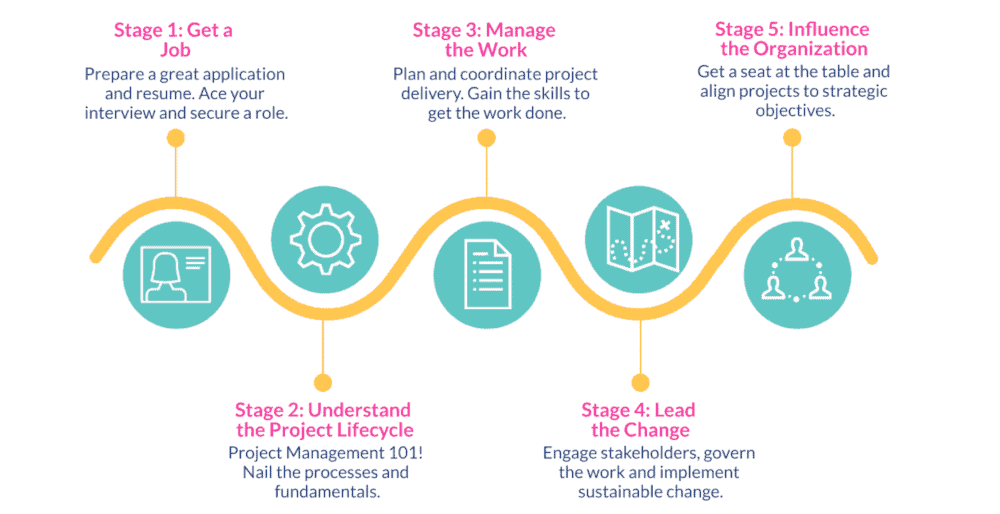
Did you have any moments of doubt before you created/launched it?
I had lots of doubts before the course went live. It was the first course where I wasn’t teaching the material live. Instead, the videos were really short and the first cohort met weekly to discuss challenges, problems, a-ha moments from the videos, how to use the resources and templates, etc. I hosted office hours calls instead of doing live teaching. Depending on what the group asked for I think we did end up with a few sessions that involved me pulling out content from my other courses to teach the extra parts.
I was worried that the pre-recorded video segments wouldn’t go down well with an audience that was used to live teaching. I was worried they would think the videos weren’t long enough, as they were used to webinars of at least an hour.
If so what made you turn it around and do it anyway?
Because, why not? If it failed, it would have cost me time and a bit of pride, but I was OK with that. I was invested in the topic and I was interested in the material – I think that made a difference, it really does help to teach what you love.
What’s your online course like?
Managing Multiple Projects is recorded videos of me talking over PowerPoint slides. There are very few text-only lessons because I don’t think that’s a helpful way to get over the materials. Some of the modules are me walking through the templates – an over-my-shoulder view of how to use the resources and fill in the spreadsheets. Other modules include videos of me in talking-head style, recorded into my laptop webcam or using my iPad camera. I think the variety is good.
How long did it take you to create your course?
I outlined the course and created the framework of 5 modules first. Then I fleshed out each module and organized the learning objectives and content for each section. The modules include lessons that cover each topic. I also looked at what would make each theme implementable – what would students need in order to put this into practice.
Tell us a little about the process of launching your course and getting your first sale(s).
The course was live launched with the option of either self-study (no live calls) or VIP access (including live calls). I think that split option opened it up to a wider group. We sold 81 seats, and about a third of people took the VIP option.
The process was a webinar launch, so I wrote the webinar, delivered that live, and then mentioned the course at the end. That was followed up with an email sequence.
Do you have a lead magnet?
I have a webinar on the sales page, so we tend to drive traffic to the webinar sign-up page. In all honesty, the webinar was hugely popular on the day it was live. The video was streamed live via YouTube and has had 1700 views, but since then I don’t think it’s working well as a lead magnet. I think it’s that people don’t have time to watch a webinar these days, so I might rethink our top-of-funnel sales activity soon.
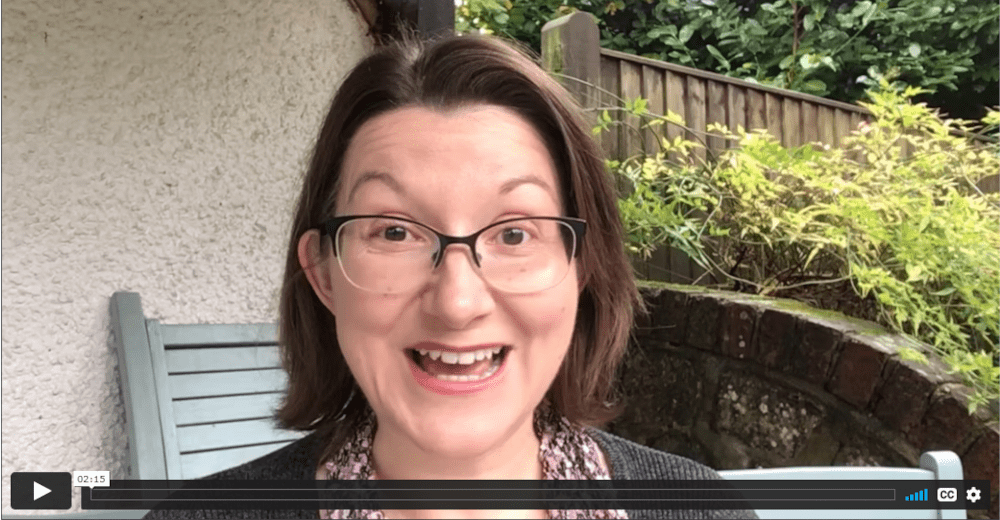
What’s the traffic strategy that works best for you?
Currently, I don’t have much of a traffic strategy! This is something we’ll improve in time. We get organic traffic to the blog homepage and there’s a banner on there that links to the webinar sales page. I’d say SEO is probably the approach we use the most.
What online course platform are you using?
I’m using Thrivecart Learn.
Do you like it?
Yes, it’s great.
Are there any features you wish it had?
I think it’s still new so there are probably features available in other platforms that Learn doesn’t have yet. I’d like to see interactive features like discussion hubs, quizzes, gamification options, etc, and the features for cohort-based learning.
What made you decide to use your chosen platform over others?
I previously used Teachery, and I still have some of my classes on there. I didn’t like the fact that Teachery has no native way of displaying a customer portal with all available courses. The upsell possibilities of letting students see what else is available was always a drawback in my mind. The Teachery interface is great. It’s a tool I would recommend to someone starting out, and there are workarounds for the problem I had. I tried a couple of other options before making the decision to move away from Teachery because it was so solid and it just worked.
What other tools do you use to run your online course business?
WordPress, Shopify, ConvertKit are the main ones.
What books or training programs have you found useful on your journey to a successful business owner that others might find valuable too?
I was an early participant in Amy Porterfield’s courses on running courses, and I’ve been part of Mariah Coz’s Accelerator program, both of which were good for me.
Do you have any big mistakes you’ve made along the way that you’d be willing to share?
Tracking stats – I’m bad at this. I couldn’t tell you what conversion rates are. I’ve just delegated this task to my very organized VA who has set up a spreadsheet and tracks everything. That level of data is so valuable, so don’t be like me – get your systems in place earlier!
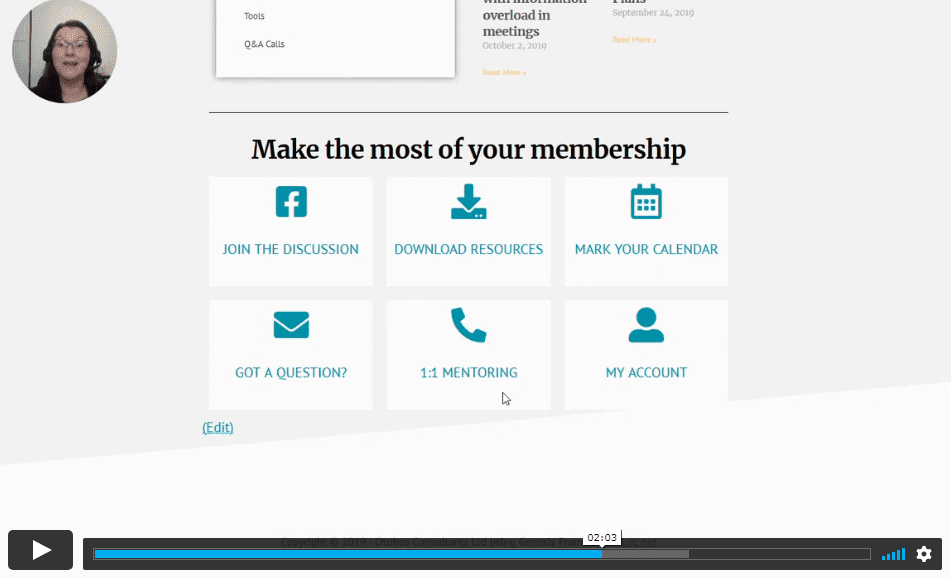
Please share some idea of revenue.
The Managing Multiple Project course launch figures were:
| Self-study | 67 | $6,499 |
| VIP | 13 | $3,861 |
| Affiliate | 1 | $58 |
| $10,418 |
That means it was my first 5 figure launch and I was doing a happy dance the day we got the sale that pushed us over.
Please tell us a little about what the money you’ve earned from your course has done for you.
I quit my day job and now I run my online business full time. It’s great! I have two part-time Vas supporting me, so it’s gone from my side hustle to a proper business. It’s not just the course I’ve been talking about that has provided for us financially, it’s a combination of lots of little things.
My advice for other course creators would be to not put all your eggs in one basket. You don’t need a signature course if your audience would benefit from lots of smaller workshops and classes. - Elizabeth Harrin Click To TweetThere’s obviously space for having a signature course and it works well for many people, but sometimes a quick hit, a short class, it was your audience needs.
I think the other learning for me was that offering the VIP option of office hours calls really worked well. It was little work for me beyond showing up and doing a bit of prep for each session, but it made people engage with the course materials as they followed along live week by week, and they’d come to the sessions ready to talk. So I’m sure that helped complete and get results.
In addition to revenue are there any numbers you would like to share?
My email list is now about 16k, but it’s been slow growth, and being someone that is not great at tracking stats, I’m not sure which social network directly contributes the most. I would say that having a lead magnet and showing up weekly on email with non-salesy stuff makes it easier to sell when you’ve got something you are proud to share with others.
What has creating your course done for you personally?
It gave me the data and the opportunity to pitch a book on the topic to a major publisher and that comes out in May.
Do you have a story of a transformation from any of your clients?
Quote from a student:
“I have to say, the workload overview workbook has been a game-changer for me. Now, my team, each teammate is each starting one of their own after seeing mine when I did a demo at our team meeting.
Last week, I went over my business case for an expensive software using one of your templates … he was totally blown away by how comprehensive my document was.”
I also had one student go back to university after taking the course, as she realized that online teaching could be accessible and would open up further education to her in a way that wasn’t available when she was going through the education system the first time. That was good to hear.